Ever stared at a stubborn tree stump in your yard and wondered, “Is there a fast, safe, and simple way to get rid of this eyesore myself?” DIY stump removal isn’t just possible—it’s practical, efficient, and can transform your outdoor space. In this comprehensive guide, we’ll unpack expert tools, insider tricks, and little-known methods to remove a tree stump with results you’ll love. Whether you want a lush lawn or simply peace of mind, these techniques put success at your fingertips. Ready to reclaim your yard? Let’s dig in!
Curious About DIY Stump Removal? Discover the Truth Behind Quick and Effective Techniques
If you’re seeking diy stump removal tricks that actually work, you’re not alone. Tree stumps are more than inconvenient—they can be tripping hazards, attract pests, and derail your landscaping plans. Thankfully, you don’t need costly tree removal companies or complicated equipment to tackle the job. This article reveals how to remove a tree stump quickly and safely, whether you choose hands-on effort, a stump grinder, or eco-friendly solutions like epsom salt and potassium nitrate. You’ll gain vital insights on how to match methods to stump size, understand time and cost trade-offs, and operate safely for best results.
With smart planning and the right tools, even large stumps become manageable. We’ll walk you step by step through every approach, showcase what to expect from mechanical vs. all-natural options, and arm you with safety tips and post-removal cleanup pointers. It’s time to debunk myths and share proven strategies you can apply today—because in the world of stump removal, knowledge is power and time is money.
What You'll Learn About DIY Stump Removal
- How to choose the best diy stump removal method
- Insider tricks for removing a tree stump quickly
- Comparison of natural versus mechanical stump removal
- Expert guidance on safety and environmental impact

Why Remove a Tree Stump? Hidden Hazards and Benefits
Keeping a tree stump in your yard might seem harmless, but the consequences go deeper than appearance. Tree stumps can become unexpected tripping hazards, especially on busy lawns or areas where children play. They often serve as breeding grounds for pests like termites and carpenter ants, potentially threatening nearby trees or even your home’s foundation if the stump remains unchecked. Ignoring a stump can also create an unsightly focal point, undermining curb appeal and reducing your property’s value over time.
Aside from safety risks, leftover tree stumps can impede lawn maintenance. Running over a stump with a lawnmower can damage equipment and leave ragged patches of dead grass. If you’re planning enhancements, such as installing a patio, garden bed, or electric fence, the stump becomes an obstacle requiring removal. Understanding these hidden hazards highlights why stump removal is often more than a cosmetic concern—it’s a smart step in home improvement and effective landscape management.
Tree Stump and Tripping Hazard Risks in Your Yard
Leaving a tree stump in your yard introduces a persistent tripping hazard. This risk is especially pronounced around walkways, playgrounds, or active family areas. During the day, grass may grow up around the stump, camouflaging it and increasing the likelihood of an accident. At night or in low-light conditions, the hazard becomes even more pronounced. The consequences? Skinned knees, twisted ankles, or worse injuries, all from a stump that could have easily been removed. Beyond physical risk, stumps provide shelter for wildlife and insects that can disrupt a healthy lawn, and moisture around the stump may contribute to fungal growth, further increasing safety risks for children and pets. Mitigating tripping hazards is a top priority for families seeking a safe, accessible outdoor space.
Neighborhoods where outdoor activity on this service is common, such as playing catch or maintaining a charcoal grill, can see stumps increase insurance liability and hazard potential. Removing a tree stump isn’t just a visual improvement—it’s a practical way to avoid personal injury and costly claims. Prioritize removing old stumps to ensure both beauty and safety in your landscape.
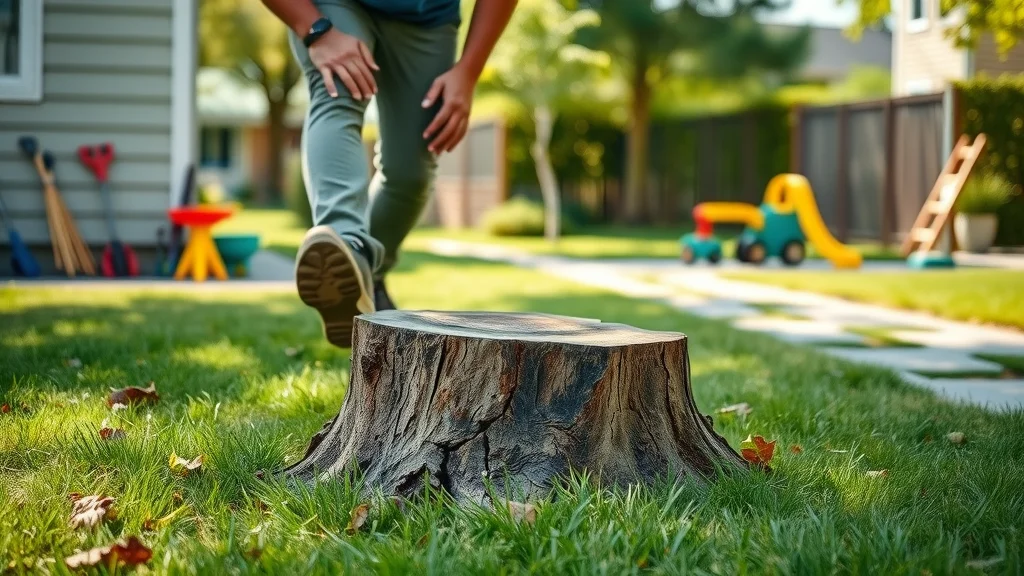
Benefits of Stump Removal for Lawn Health and Curb Appeal
The benefits of tree stump removal stretch far beyond hazard reduction. A cleared yard enhances curb appeal instantly, making your property more inviting and marketable. Your lawn becomes safer for children, pets, and guests, while mowing and maintaining the grass are much easier. Additionally, removing the stump helps prevent the regrowth of unwanted shoots, maintaining a uniform lawn that’s easier to landscape or upgrade with features like a garden, play area, or electric fence.
Without a stump, you can even out your yard, reseed grass, or lay sod—restoring the area to its natural beauty. This process eliminates pest habitats and helps halt the slow decay that might otherwise attract fungi or wood-boring insects. If you’re considering selling your home or simply want peace of mind and a healthier outdoor environment, stump removal is a clear win. Whether you choose to remove a tree stump yourself or hire a tree service, this upgrade pays off in both short-term enjoyment and long-term property value.
"Neglecting a tree stump isn’t just an eyesore—it’s a tripping hazard and an invitation for pests. DIY stump removal saves frustration and transforms your yard."
Top DIY Stump Removal Methods: Stump Grinders, Natural Solutions, and More
There are several effective DIY stump removal methods to choose from, each with its unique strengths. Selecting the right option depends on your stump size, timeline, and resources. Manual methods like digging work best for small stumps, while treatments like epsom salt and potassium nitrate dissolve medium and large stumps over time. For fast results on big stumps, nothing beats a mechanical stump grinder. Let’s break down each approach—so you can match your project with the perfect solution and avoid a tree removal headache.
The method you choose also impacts your labor, the tools required, and the environmental footprint of your stump removal. If you’re torn between renting a stump grinder or harnessing nature’s chemistry, this section will point you in the right direction with honest, actionable comparisons.
For those looking to optimize their yard maintenance beyond stump removal, integrating seasonal tree care can make a significant difference. Discover practical strategies in these fall tree trimming tips that most homeowners overlook to keep your landscape healthy and hazard-free year-round.
How to Remove a Tree Stump by Hand
- Tools required for manual diy stump removal
- Best for small tree stumps
- Step-by-step removal process
Manual removal is an effective approach for small tree stumps and gives you complete control over the process. Start by gathering essential tools: a sturdy shovel, a digging bar, a mattock or pickaxe, and (for stubborn roots) an axe to chop through thick wood. Select a day with soft soil—ideally after rain. Begin by digging a trench around the stump to expose major roots. Use the digging bar and shovel to widen the trench, then swing the axe or use a hand saw to cut through roots as you encounter them. By rocking the stump gently and clearing outsoil, you can eventually pry it free. This method requires patience but offers clear results, especially if you need to avoid a tree service bill or want to control disposal of chips and debris.
The manual approach is best when the stump’s diameter is less than 12 inches and is not located near obstructions like a fence or utility lines. While labor-intensive, it’s a low-cost way to remove a tree stump and grants a sense of accomplishment and peace of mind knowing the job is thoroughly done.

Using a Stump Grinder for DIY Stump Removal
- Choosing the right stump grinder
- Safety tips and personal protective equipment
- Efficient operation for large stumps
For medium to large stumps, a stump grinder offers unmatched efficacy and speed. Renting a stump grinder from a local hardware store is usually more economical than buying, unless you anticipate frequent use. When selecting a grinder, ensure the cutting wheel is suited to your stump’s size and your yard’s terrain. Safety is paramount—always wear the recommended PPE: gloves, goggles, sturdy boots, and ear protection. Before operation, clear the area of rocks, toys, or debris to avoid injuries or damage to the blade. Read the manufacturer’s instructions thoroughly and check local fire restrictions if grinding generates sparks.
Position the grinder over the stump and slowly lower the cutting wheel, moving it back and forth to grind the wood to below ground level. Continue until the stump is fully reduced to mulch, about 8-10 inches below the surface. This method quickly handles big jobs, with most grinders capable of tackling large tree stumps in under two hours. Grinding is fast but generates a lot of chips and dust—plan for cleanup and proper disposal. Despite the higher initial effort, this approach combines efficiency with satisfying results, turning a massive stump into usable mulch while avoiding the cost of a professional tree stump removal service.
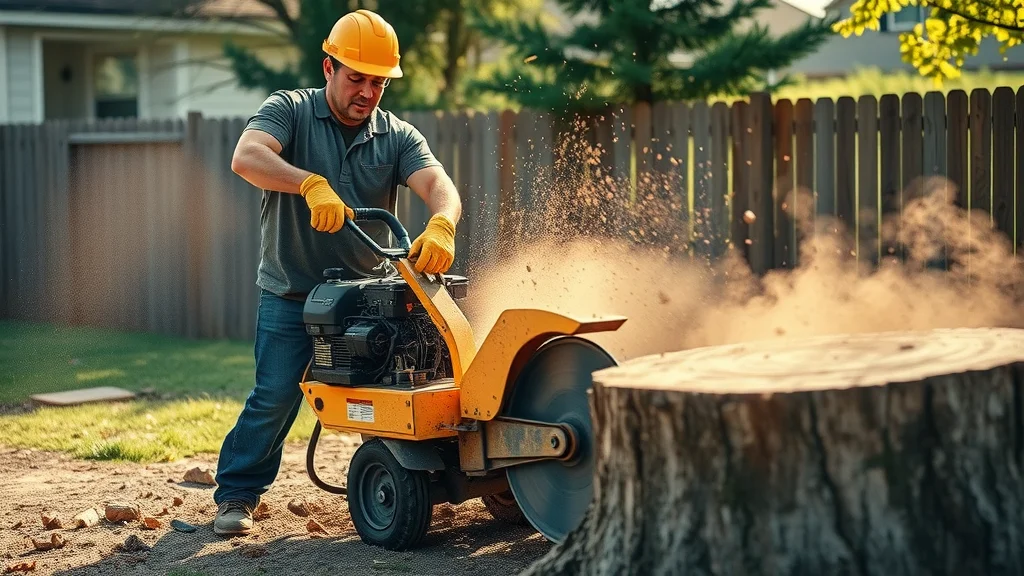
Natural Solutions: Remove a Tree Stump with Epsom Salt or Potassium Nitrate
- Scientific principles behind Epsom salt and potassium nitrate
- Step-by-step guide to chemically rotting a tree stump quickly
If physical labor or heavy equipment isn’t an option, consider natural chemical methods to remove a tree stump. Common products include epsom salt (magnesium sulfate) and potassium nitrate, both of which speed up stump decomposition. Begin by drilling deep holes (8–10 inches) into the top and sides of the stump. (Tip: The more holes you drill, the faster decomposition occurs—use a wide drill bit for best results.) Fill the holes with your chosen chemical—a full cup per hole for optimal effect. Cover the stump with a tarp to retain moisture, then wait several weeks.
These natural solutions work by drawing moisture out and disrupting cellular processes, effectively starving the wood. Potassium nitrate, commonly sold as a commercial stump remover, can reduce a large stump to soft, crumbly wood in 4–8 weeks. Epsom salt is slower but safer for surrounding soil and easier to source. Both methods minimize environmental impact and are excellent when you need a low-labor, gradual approach—just set your expectations, as even the fastest results take a few weeks. For added speed, cover the stump and keep it moist, turning your patience into success over time.
Table: DIY Stump Removal Methods Compared
| Method | Best For | Time to Remove | Tools Needed |
|---|---|---|---|
| Hand Digging | Small tree stumps | 2–6 hours | Shovel, axe |
| Stump Grinder | Large stumps | 1–2 hours | Stump grinder, PPE |
| Epsom Salt | Moderate size | 8–12 weeks | Drill, Epsom salt |
| Potassium Nitrate | Large tree stumps | 4–8 weeks | Drill, potassium nitrate |
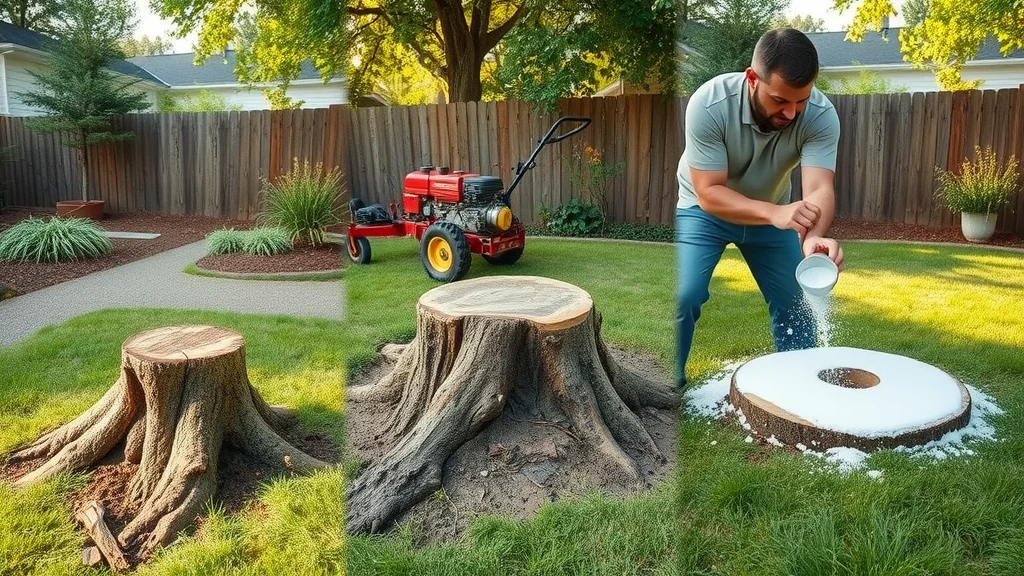
Step-by-Step: How to Remove a Tree Stump Safely
Removing a stump safely requires preparation and methodical execution. Whether you choose manual, mechanical, or natural methods, always begin by surveying for underground utilities and clearing the work area. Wear gloves and eye protection for every approach, and keep children and pets away from the site until the job is complete. For larger stumps, assess the soil and stump stability, especially if you need to avoid a tree shift that could endanger nearby structures or fences. Organize your tools before starting, and plan for breaks in physical tasks to prevent overexertion. Prioritize safe tool handling and appropriate storage during and after use for peace of mind.
Once the stump is removed, backfill the hole with soil and debris, level the area, and reseed or replant grass to encourage swift recovery. Many DIYers cover the spot with mulch or sod for an instant facelift. These clean-up steps help restore your landscape while eliminating tripping hazards or pest-attracting debris that may remain after removal. Regardless of the method you select, following safety best practices ensures your project ends successfully and injury-free.
Preparation for Stump Removal
A successful diy stump removal starts with careful planning. Walk around your yard to identify any obstacles, such as rocks, pipes, or power lines—contact utility services if you’re unsure. Gather all required tools, including shovels, mattocks, saws, and personal protective equipment (PPE). For chemical methods, source high-quality epsom salt or potassium nitrate, and check product labels for safety information. Schedule your removal project on a day with favorable weather for comfort and visibility. If you’re using a grinder, reserve rental equipment in advance and ensure you have a safe path for delivery and movement.
Remove decorative items, hoses, or electric fence components near your work zone to avoid damage. Place necessary items within easy reach but away from active digging or grinding for safety. With good preparation, you’ll make steady, efficient progress and set the stage for a hazard-free project.
Protecting Yourself and Your Yard
Safety during stump removal is non-negotiable. Always wear gloves to protect your hands from blisters, sharp roots, or splinters. Sturdy boots shield feet from heavy tools and prevent slips, while long sleeves and safety goggles minimize risk from flying debris and wood chips. If you’re operating a stump grinder, mandatory PPE includes ear protection, a face shield, and snug-fitting clothing to avoid accidents. Mark boundaries around your removal area using cones or rope—this keeps children, pets, and bystanders at a safe distance during the process.
If using chemical methods, prevent children and pets from accessing the treated stump. Place a visible marker or cover the site with a tarp, and always store chemicals in a secure location away from heat or sparks. Even when relying solely on hand tools, keep a first aid kit and phone handy in case of minor injuries or emergencies. Prioritizing protective steps is essential for achieving peace of mind and smooth, incident-free completion of your diy stump removal project.
Final Cleanup After DIY Stump Removal
With the stump gone, it’s cleanup time! Start by removing coarse wood chips, root fragments, and any leftover chemical containers. Use a rake to smooth the soil and fill in low spots; compost or dispose of organic debris according to local guidelines. If large holes remain after removing a tree stump, backfill with topsoil and tamp it down to promote healthy regrowth. For a professional finish, reseed the affected area or lay down fresh sod—this step restores appearance and prevents weeds.
Double-check for lingering hazards, such as exposed roots or tool fragments, and store all equipment securely for future use. If you’ve reused chips as mulch, spread them evenly to aid moisture retention elsewhere in your garden. Post-removal cleanup delivers that final touch: a safe, attractive, and renewed yard where you can relax, entertain, or simply enjoy the fruits of your successful project. Congratulations—you’ve mastered every aspect of diy stump removal.
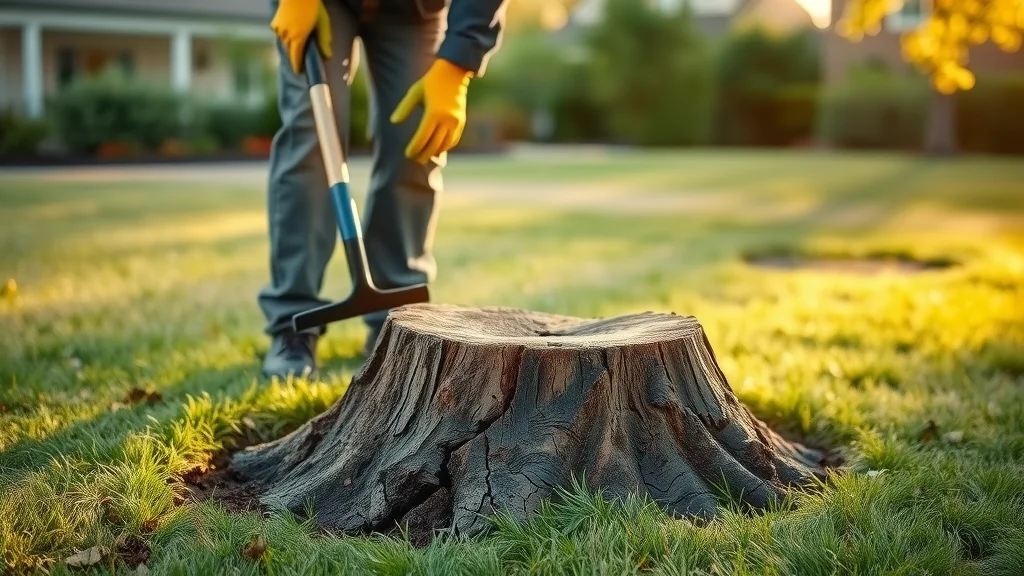
Cost and Time: Evaluating the Best DIY Stump Removal Approach
Choosing how to remove a tree stump is often about balancing time, money, and effort. Manual methods cost very little (mostly sweat equity), but require several hours of labor. Renting a stump grinder starts at around $100–$150 per day, which makes sense for large stumps or multiple removals. Chemical options have a low up-front cost ($10–$30), but take weeks to see effects—perfect if you’re not in a rush. Don’t forget to factor in costs for PPE and replacement hand tools. While it’s tempting to choose the cheapest solution, “time is money”; sometimes paying a little more for speed pays off, especially if you want to enjoy your refreshed yard sooner.
Compare each method closely: manual for small stumps, mechanical for urgency or extensive tree stump removal, and chemical for low-hassle, long-term results. No approach is universally “best”—align your choice with your needs, timeline, and willingness to work, and you’ll get satisfying results without busting your budget.
Cost Comparison: Manual, Chemical, and Stump Grinder
Manual digging is the most affordable route, costing nothing if you already own common yard tools. Renting a stump grinder for a day averages $100–$200 (plus delivery if needed), but the time savings can be substantial for large stumps. Chemical options, such as epsom salt or potassium nitrate, run $10–$35 for enough product to treat one sizable stump—making them a favorite for patient DIYers. Don’t forget PPE costs (gloves, goggles, boots) and tool wear, which can add $20–$50 if starting from scratch. When you add it up, the most cost-effective method may be a blend: dig by hand for small jobs, use natural decomposition for medium stumps, and rent a grinder if you have multiple or especially tough stumps in your yard.
If you’re overwhelmed or short on time, hiring a tree service averages $75–$350 per stump, with prices climbing for hard-to-access or very large projects. Even so, many homeowners find DIY options provide better value and personal satisfaction, especially with proper planning and preparation.
Expected Timeframe for DIY Stump Removal
Time is a critical factor in the method you choose for diy stump removal. Hand digging takes 2–6 hours, varying with soil, root complexity, and stump diameter. A stump grinder can transform large tree stumps into chips within 1–2 hours, though setup and cleanup may add extra time. Epsom salt and potassium nitrate, while minimal effort, require patience: expect 4–12 weeks for full decomposition, with potassium nitrate acting a bit faster. To accelerate these processes, drill more holes and keep the stump moist under a tarp, but be realistic about natural limitations.
Ultimately, your timeframe depends on urgency, project scope, and your own energy level. Plan ahead if you want the job complete before a big event, or start chemical treatment in the off-season for lawn makeovers come spring. Flexibility ensures you don’t sacrifice safety or lawn quality in pursuit of speed.
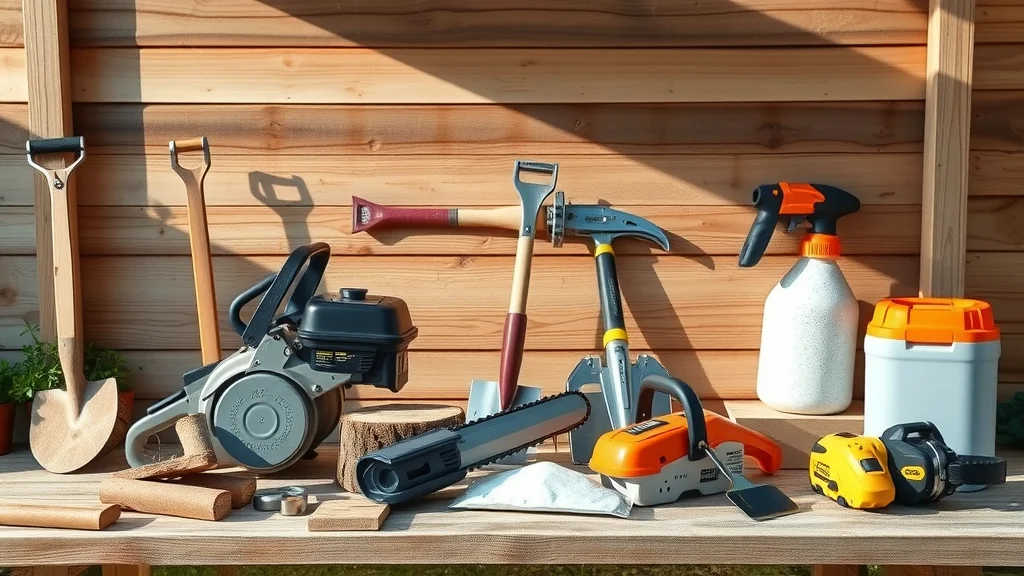
People Also Ask: Expert Answers on DIY Stump Removal
What is the fastest way to get rid of a tree stump?
The fastest way to remove a tree stump is to use a stump grinder. Renting a stump grinder allows you to reduce most large stumps to mulch in just 1–2 hours. Before grinding, clear the area, wear full PPE, and follow machine instructions closely. Grinding is ideal for speed and efficiency compared to manual or chemical methods, which take much longer—making stump grinders the preferred solution when “time is money.”
How to get rid of a stump in 2-3 days naturally?
While most natural methods take weeks, the only way to see significant progress in 2–3 days is to combine several tactics: drill holes deeply into the stump, fill them with epsom salt or potassium nitrate, saturate with hot water, and cover with a tarp to lock in heat and moisture. Though this can accelerate internal decay, complete removal will still require additional time. For true removal within days, mechanical grinding remains the only truly quick method.
How long does it take Epsom salt to dissolve a tree stump?
Using epsom salt for diy stump removal takes about 8–12 weeks to fully decompose a standard-sized stump. The process depends on weather, stump size, and the frequency of chemical application. Drilling additional holes and keeping the area moist and covered will speed up results, but patience is necessary. Epsom salt is best for those who want a low-effort and environmentally gentle approach.
What will rot a tree stump quickly?
Potassium nitrate is the most effective and fastest rotting agent for tree stumps available to homeowners. Drill holes, fill with potassium nitrate, pour in hot water, and wait 4–8 weeks for substantial softening. Afterward, the stump can be broken apart with an axe or buried. Covering the area and keeping it damp ensures the process moves as quickly as possible.
Answers to People Also Ask
Speed and ease depend on the method you choose: stump grinders for fast removal, epsom salt for gradual decomposition, and potassium nitrate for the quickest chemical breakdown. Manual digging is labor-intensive but cost-free, while chemical options are safer for pets and children if properly contained and monitored. Prioritize safety and match technique to your timeline and yard environment for best DIY stump removal results.
DIY Stump Removal Video Tutorial: Watch Step-by-Step Methods
Watch our easy-to-follow explainer covering manual removal, chemical techniques, and safe use of a stump grinder—all demonstrated in a real backyard setting.
Essential Tools and Equipment for DIY Stump Removal
- Stump grinder
- Shovel
- Mattock
- Chainsaw
- Hand saw
- PPE (gloves, goggles, boots)
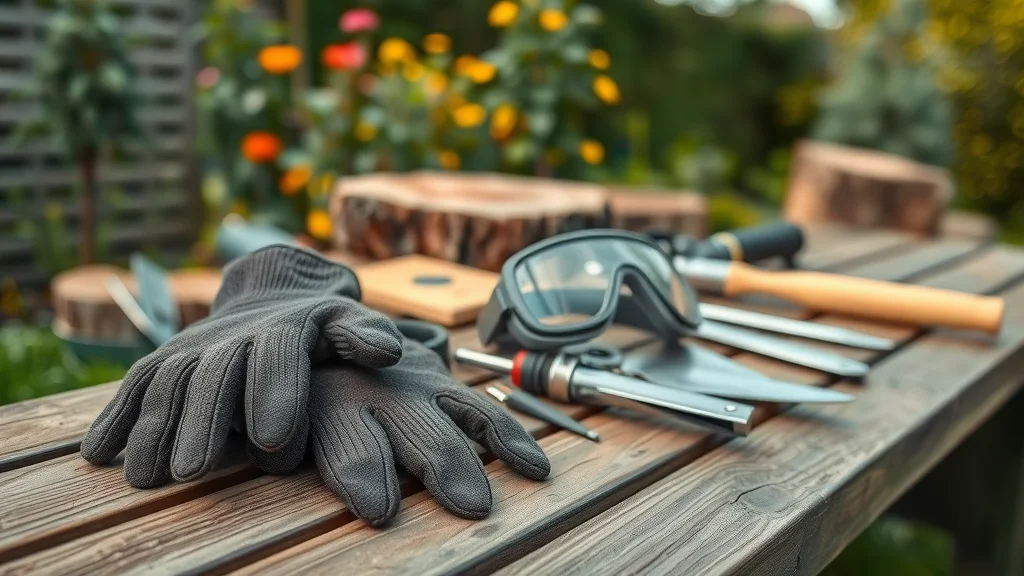
Key Takeaways: DIY Stump Removal Success
- Match removal method to stump size for best efficiency and safety
- Prioritize PPE and careful planning before starting your project
- Manual, mechanical, and chemical options suit different budgets and timelines
- Effective cleanup and restoration ensure a beautiful, stump-free yard
- Patience and preparation go hand-in-hand for lasting results
Frequently Asked Questions About DIY Stump Removal
Can I remove a tree stump without heavy equipment?
Yes. Small to medium tree stumps can be removed with hand tools such as shovels, mattocks, and axes. This approach is cost-free but requires time and effort. Chemical methods using epsom salt or potassium nitrate allow removal without machinery, but take longer to complete.
Are chemical methods safe for pets and children?
Chemical stump removers are generally safe when used as directed. Always prevent direct contact with treated stumps, keep pets and children away, and properly mark or cover the area during decomposition. After the process is complete, thoroughly remove and dispose of any remaining chemicals to return your yard to safe, regular use.
Conclusion: Take Control—Master DIY Stump Removal Today
With the right knowledge, tools, and safety tips, you can achieve fast and effective DIY stump removal and reclaim your outdoor space—no professional needed!
If you’re ready to elevate your landscaping skills even further, consider exploring broader tree care strategies that go hand-in-hand with stump removal. Our guide on fall tree trimming tips that most homeowners miss offers valuable insights for maintaining healthy, beautiful trees throughout the year. By combining smart stump removal with seasonal trimming, you’ll create a safer, more attractive yard and set the stage for long-term landscape success.
 Add Row
Add Row  Add
Add 

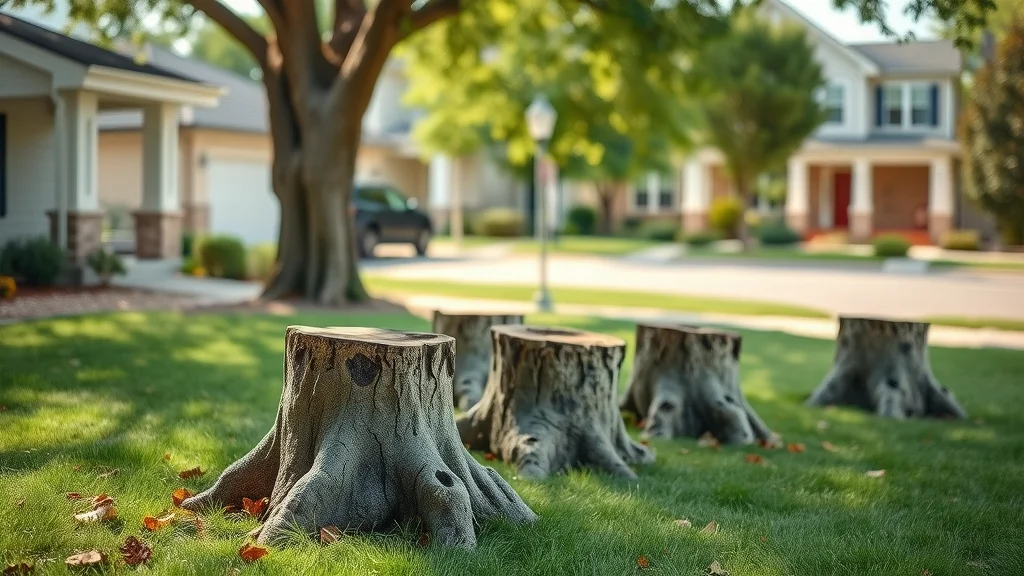

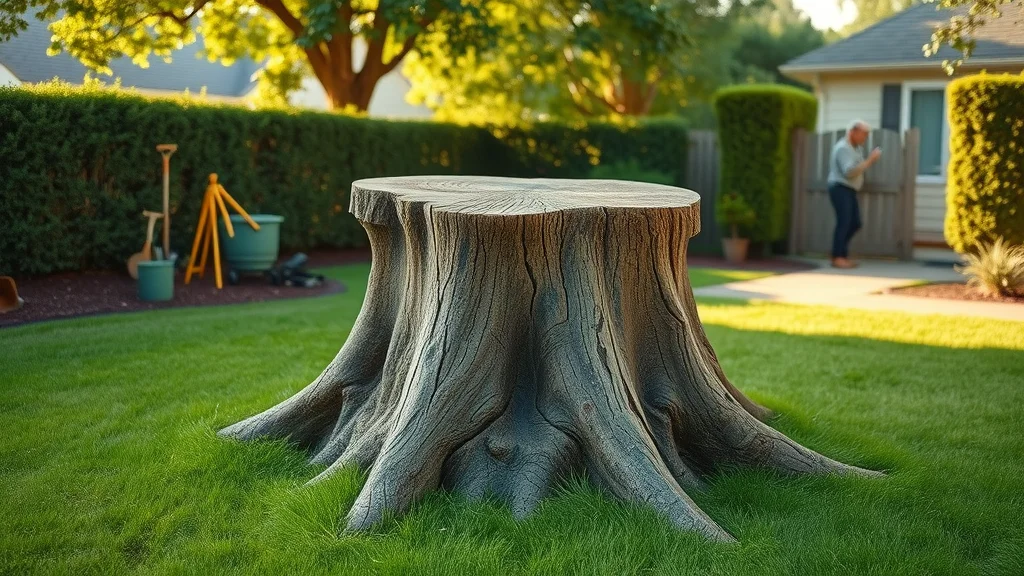
Write A Comment